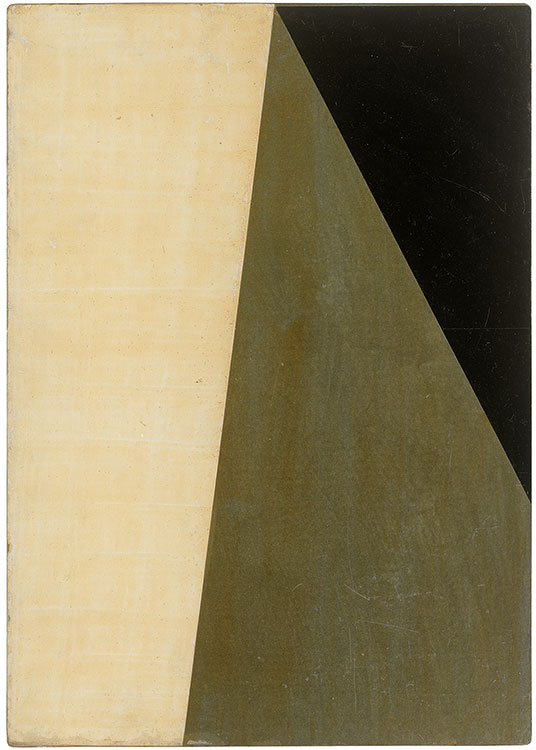
Between 1930 and 1937, Glöckner produced more than 150 panels known collectively as his “Tafelwerk.” Made on a stiff board composed of layers of cardboard repeatedly dipped in a hot glue solution, these sturdy, double-sided works can be understood as sculptural objects. While the artist was aware of the contemporary Constructivist movement, he worked in Dresden largely in isolation and developed his compositions independently. This panel was made toward the beginning of this intensely creative period. Glöckner implemented a systematic compositional approach, manipulating his geometric shapes so that corresponding fields of color on the recto and verso have the same surface area.
Hermann Glöckner
German, 1889–1987
White and Silver with a Black Wedge on Top, ca. 1932
Colored paper, tempera, board, and varnish
INV. NO. C 1980-546
© Kupferstich-Kabinett, Staatliche Kunstsammlungen Dresden © 2021 Artists Rights Society (ARS), New York / VG Bild-Kunst, Bonn
Photo: Herbert Boswank
